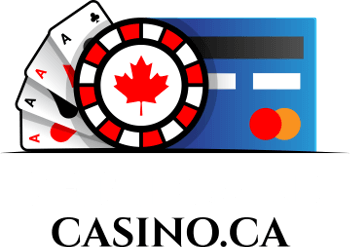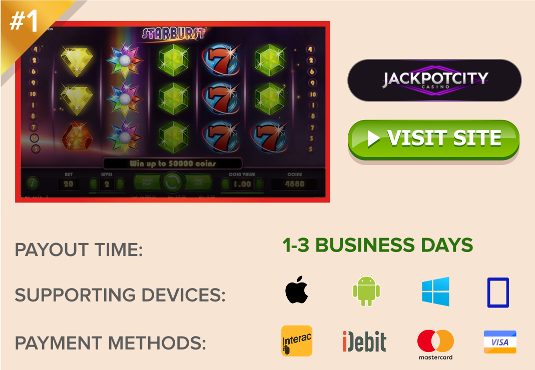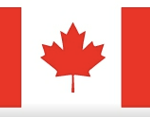How to Get Better at the Game of Blackjack

How to Improve Your Blackjack Game
Investigating different strategies is certainly helpful, but knowing them by heart – being able to execute them without a second thought – takes a lot more discipline than most are willing to apply. If you think you’ve got what it takes, we’ll teach you how to get better at the game of blackjack in four determined steps.
- Game Evaluation: Blackjack games are not created equal. There are so many rules that can be altered, and each one impacts the casino’s edge. If you understand the impact of each rule, you’ll be bale to choose the highest RTP game available.
- Chart Selection: Every variation in the rules can impose a variation in proper strategy. Get the right chart for your game, or your only working against yourself.
- Mindless Memorization: With your game choice and chart decided, memorization becomes your best friend. You should never have to think twice about your next move.
- Precision Counting: Card counting a progressive technique. Each phase requires intense practice sessions with multiple decks in a genuinely distracting environment.
- Game Theory: Commonly applied to poker, game theory can be utilized in blackjack and any other gaming environment where multiple player decisions impact the outcome.
|
Disclaimer – Not all forms of gambling are legal in all provinces of Canada. The legal age to gamble also varies by province. Breaking the law is a serious matter. The information provided on this website is meant for educational purposes only, and we will not be held liable for any irresponsible / illegal activity on your part. Know the gambling laws in your province and follow them. The following pages provide more information on Canadian gambling laws:
|
How to Choose the Right Blackjack Game |
||||||||||||||||||||||||||||||||||||||||||||||||||||||||||||||||||||||||||||
|
Game selection is incredibly important in blackjack. There are so many rules that can be altered, and every single one impacts the house edge in some way, either for or against the player. The right game will always be the one that proffers the highest RTP, or theoretical “return to player”, with proper strategy applied. The RTP is, in effect, the opposite of the house edge. An edge of 0.5% equates to a 99.5% RTP, where the two numbers combined total 100%. The edge is the amount the casino expects to win, while the RTP is the amount the player can expect to win back from his bets. So even a 99.5% RTP translates to an expected loss of 0.5% for the player. There is no blackjack game that presents a natural RTP at or above 100%. Most games come in somewhere between 99.3% and 99.8% RTP. Anything lower is considered abysmal. The real problem is that casinos don’t like to advertise each game’s RTP. That’s where building your knowledge base will come in extremely handy. As I said, every rule impacts the edge in some way. Knowing the good rules, versus the bad rules, will help you evaluate every game’s RTP, so that you can make better choices in blackjack game selection. The following is a chart that details all variable blackjack rules, categorized by their Positive (good for player) or Negative (bad for player) impact on the game’s RTP.
|
The Right Chart for the Blackjack Game at Hand |
|
Just as the rules for each game vary, so will the finer details of its corresponding strategy chart. One set of rules might call for doubling on soft 17 against a dealer’s 5, while another may recommend standing. Make the wrong choice in any situation, and you’ll only be impeding the game’s inherent RTP. The following page lists more than 50 blackjack game rules commonly found in live, online and land-based casinos. Details for each game include basic rules of play, theoretical RTP, and the correct strategy chart to achieve that RTP. It’s an invaluable resource that I strongly recommend bookmarking for reference down the road. |
Memorize the Chart to Mindless Perfection |
|
Mindless isn’t normally a word we associate with positive behavior. In blackjack, however, mindless memorization of the strategy chart that correlates with your game of choice will become your best friend. We’ve all seen those little strategy charts, designed so squintingly small that they fit in your back pocket. Some games are so uncommon, or so new, that there is no pocket-sized chart to squint at. And either way, constantly checking your chart is not the way to stay ahead of the game. It will, in fact, decimate your chances of success in the next step (Precision Card Counting). You’re going to have to practice employing the right strategy so devoutly, it becomes second nature to you. The easiest way to commit anything to memory is to repeat it so many times, you don’t even have to think about it anymore. And once you stop thinking about it, you have to know that you’re doing it right. The best way I’ve found to do this is to start on your own, dealing hands and using the chart to play them correctly. When you think you’ve got it down, get some friends to help you out. You’ll need one to play the role of dealer, and another to keep an eye on the strategy chart. Playing multiple hands will help to expedite the learning process. Start with three hands at a time, then increase to five as your skills progress. The friend evaluating your strategy chart should point out any errors made when the hand is complete. If you can’t get friends to help, there’s an alternative method, although it takes more time and patience. You’ll need to download a versatile blackjack app that lets you set the rules of the game. Set them to mimic the same rules that apply to your strategy. Record your sessions, and when you’re done, review it, making sure that you made the correct moves. Keep this up until you’re absolutely certain you’ve got it down without making any errors. Then move on to the next step. |
Counting Cards to Precise Perfection |
|
Strategy charts will only get you as close to a 100% RTP as the casino allows. To get over the 100% hump, turning the house edge into a player advantage, you must employ a card counting technique. The more complex the system, the more it will add to your RTP. There are two things you need to know about card counting. First, you cannot do it at an online casino where the games are computer generated by an RNG algorithm. The deck is reshuffled after every hand, negating the strategy entirely. Second, if employees of the land-based casino knows you’re counting cards, they can either ask you to leave, or increase the shuffle rate to diminish the efficacy of the count. Either way, casinos are well within their rights, and there’s nothing you can do about it, except not getting caught. That being said, you have to be to able to count cards correctly without the casino knowing you’re doing it. You cannot possibly be inconspicuous if you haven’t practiced card counting so devoutly that it’s become more instinctual than mindful. To practice, you can start with a single deck of cards, peeling off one at a time and keeping count as you go. If you get to the end of the deck and the count is at 0, you’ve probably done it right. Do this again, and again, and again – so many times that you can consistently complete a full deck’s count in under a minute. Note: Make sure you’re utilizing a card counting technique that supplements enough RTP value to get you to a positive expected value, or +EV (e.g. RTP above 100%); the higher the better. Next, put on your favorite playlist of music and do it again, this time while singing along to each song. This will help you to split your concentration between the two activities. Once you get this down, progress to multiple decks of cards. I suggest being able to count through at least four decks; an amount that represents 50% penetration in an 8-deck shoe. The key to making this work is to implant new distractions, making the activity as true-to-form as possible. Again, a little help from friends can be invaluable. Have them sit around the table with you, holding a casual conversation as you go. Play a real game with them in this manner. With enough practice, you should be able to pull off a precision count in a real casino environment, without setting off any security radars. |
Application of Game Theory in Blackjack |
|
Game theory isn’t something professional gamblers think of when it comes to blackjack. This particular strategy is most effective in poker games and other player-vs-player gambling situations. But the efficacy of game theory does apply here, too. The only requisites for game theory are the presence of multiple participants, and that those participants are able to make choices that impact each others results. Whether the guy on your left hits or stands will directly impact the order of cards dealt. Whether his move was a good one or not also has implications on everyone else’s game at the table. That being said, I strongly suggest having a closer look at this write-up documenting the use of game theory in appropriate gambling situations, including its application in blackjack. It may not be supremely impactful on your results, but what stand-alone strategy is? All of the above steps teach you how to improve your blackjack game, but unless you roll them all into one neat little bundle of strategy, none can work alone to give you a consistent +EV. |
 Jackpotcity.com is our editorial pick for your gaming needs. Currently offering an entire suite of casino games, as well as a wide range of Canadian deposit options, JackPotCity truly offers world-class gaming.
Jackpotcity.com is our editorial pick for your gaming needs. Currently offering an entire suite of casino games, as well as a wide range of Canadian deposit options, JackPotCity truly offers world-class gaming.




